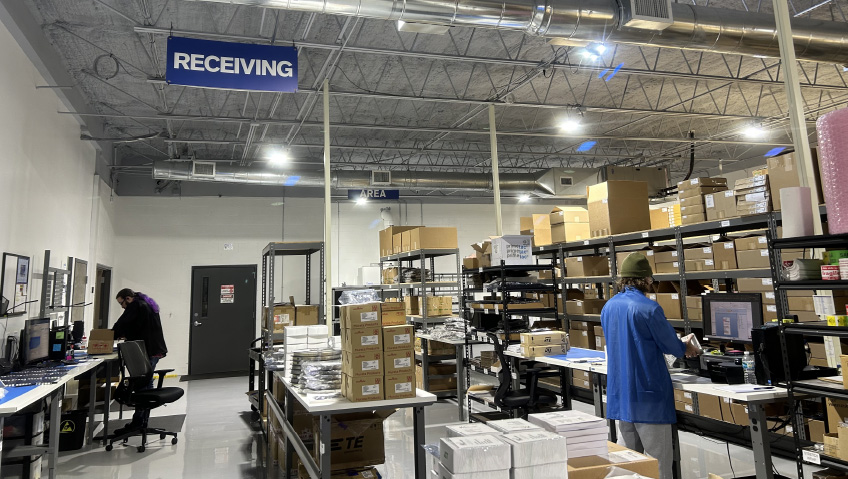Upgrading electronic devices has become second nature for most, while correctly disposing of related materials for recycling has, in many places, become “the right thing to do.” But what do statistics tell us about the realities of electronics disposal? Is recycling all that it is made out to be and are materials reaching manufacturers? How could the electronics waste (e-waste) repurposing loop be improved?
One of the great realizations of our age must be that in reality—when it comes to the disposal of goods—there is no such place as “away.” Nowhere is this more evident, perhaps, than in the next big realization—that the disposal of first-world electronics shipped off to disappear into landfills and onto rubbish heaps in developing countries is not a solution, as all this does is cause significant environmental and health issues due to toxic chemicals like lead, chromium, cadmium, flame retardants, and others leaching into the soil and water of people who do not participate to the same extent in creating the problem. A solution had to be found. Enter the concept of electronic material repurposing.
A study by the United States Environmental Protection Agencyhttps://archive.epa.gov/epawaste/nonhaz/municipal/web/html/ (EPA) estimated the total repurposing volume of materials originating from electronics to be under 40 percent in 2018. The fabrication volume of electronics in that year weighed in at well over 2.6 million tons.
Within its framework of municipal solid waste (MSW), e-waste is defined as miscellaneous durable goods, or more specifically, goods with a lifespan exceeding three years or more. Within this category, personal devices and other electronic equipment are further categorized as selected consumer electronics.
Alongside the EPA’s figures, the Geneva Environment Networkhttps://www.genevaenvironmentnetwork.org/events/international-e-waste-day-2023/ indicates a global 2019 e-waste tonnage of more than 53 million, the recycling rate of which is estimated at under 20 percent. The report notes that the calculations of the United Nations indicate the global average volume of e-waste of 8kg per capita in 2023 to collectively exceed the weight of the Great Wall of China. According to the same report, only about half of global recycling of e-waste is correctly catalogued. That includes what it refers to as invisible e-waste—ubiquitous items such as cables, e-cigarettes, electronic toys, and similar objects that most consumers do not consider recyclable.
With the writing on the proverbial wall now clearer than ever, imminent action is of the essence. According to the EPA, 25 U.S. states uphold laws governing electronics waste, with California passing the first such laws in 2003. According to a report from the University of British Columbia, Canada has also implemented stringent legislation placing considerable recyclability and reduced toxicity responsibility on the shoulders of brand owners. As a result, the country now has a host of recycling businesses focused on returning electronic materials to the fabrication cycle, including TechReset, a company with a zero-landfill policy.
As part of the Electronics Product Stewardship Canada (EPSC) initiative, member OEMs like Microsoft Corporation, IBM Canada Ltd., Apple Canada Inc., Samsung Electronics Canada Inc., and Sony North America release an annual performance report under the watchful eyes of organizations like the International Standards Organization (ISO) on their progress in fabricating safer, better recyclable electronics devices and their social responsibility, which is available to the public. Currently, the initiative claims to have been instrumental in rerouting close to 400,000 tonnes of e-waste toward recycling and repurposing and away from a certain grave.
Beyond recycling, there are initiatives to reduce the need for reuse by eschewing plastic packaging in favour of paper and overwriting obsolescence by extending battery life—especially in phones. To this end, Sony released its Xperia smartphone last year, featuring battery life that exceeds three years, while replacing a large segment of its plastic packaging with paper. How this trend fares long-term remains to be seen.
What is evident is that public push-back is reaping rewards as increased accountability from groups like EPSC has led to more companies developing return policies on used electronics. In January this year, prnewswire.com reported that Panasonic announced its new Take Back for Tomorrow pilot program, which recycles electric trimmers and shavers. Motivated by the notion that over 87 million people in the United States own at least one of these devices, it would appear to be as good a place as any to start recovering reusable parts and plastics.
To help prevent further environmental damage, governments are joining the conversation, with the United States Department of Energy (DOE) inviting public conversation from manufacturers when it published a request for information in March this year. With the goal of better understanding the complexities of circular economies like that of e-waste recycling and its potential to provide industry with reusable rare earth minerals, reduce the use of virgin plastics, and more, it is actively participating in the race to innovate methods for getting and keeping the public involved in taking up the necessary task of acting with urgency. By thoroughly researching existing processes, the U.S. government stands to establish improved solutions and infrastructure to solve the challenges.
In Canada, the Electronic Products Recycling Association, an industry-led organization, appears to be in the lead with finding solutions, according to environmentaljournal.com. By providing over 2,400 drop-off points throughout Canada, the association is inspiring and receiving good cooperation from the public. Following disposal and drop-off, devices are processed by approved recycling agents capable of handling hazardous materials. They also avoid illegal sales and shipping of materials while feeding and repurposing fabrication chains.
Despite vigorous public involvement on home shores, current reports indicate that the verdict on the nature and health of a global electronics recycling loop remains lacking in consumer awareness. With so many precious resources like rare earth minerals mined at tremendous financial, political, environmental, and human cost in countries around the world, retrieving as much reusable material as possible is imperative to the health of the planet, its inhabitants, and the electronics industry.
As such, North America does well to continue the good work of active participation and spreading awareness on the subject. In curbing the single-use electronics trends of yesteryear in favour of responsible consumerism by cultivating values and buying habits that secure a sustainable future for generations to come, the instant gratification of doing good is amply satisfied. And this, of course, is only possible through the committed participation of local manufacturing and recycling leaders.






